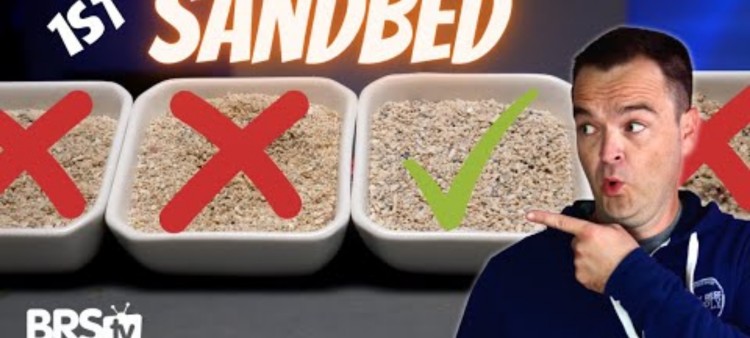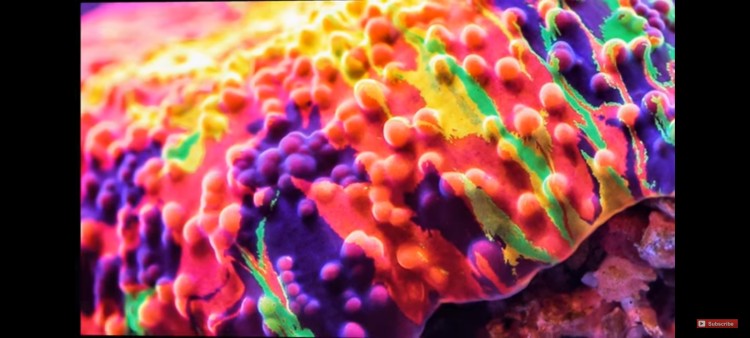Boost Your Saltwater Tank's Biofilter With a Sand Bed
- Apr 10, 2022
- Anshika Mishra
- 174 0 0

Fiji pink isn't pink, a black sand bed will scratch the heck out of your aquarium, and a bare bottom is a terrible idea.
Why Do You Need Sand Bed?
There are three primary functions of a sand bed:
- Beneficial Bacteria: Firstly, a sand bed is a home for beneficial bacteria, there is a lot of surface area on a sand bed, which can be home for all sorts of bacteria that will help keep the nitrogen cycle moving along in the tank.
- Home to Livestock: The second function of a sand bed is to provide a home and food source for a lot of life stock in your tank. Many different types of fish and inverts live in and depend on a sand bed for their survival.
- Aesthetically Pleasing: A vast majority of the time, a saltwater aquarium with a sand bed looks better than a bare bottom tank.
Types of Sand Bed
There are only two types of sand bed you can create:
- A deep sand bed
- A shallow sand bed
A Deep Sand Bed
A deep sand bed (DSB) usually has a depth of six to eight inches. Not recommended for beginners.
A DBS attempts to create an anaerobic zone near the bottom of the tank where de-nitrifying bacteria can survive and thrive and help concern NO3 or nitrate back to N2 or atmospheric nitrogen gas.
Deep sand beds take up a large portion of your tank, can be difficult to clean, and, if not done correctly, can create pockets of poisonous gas.
A Shallow Sand Bed
On the other hand, a shallow sand bed is any sand bed less than two inches, but they are usually around one inch in depth.
They are aesthetically pleasing and deep enough to provide habitats for most of your live stocks. A shallow sand bed also has a ton of surface area for that beneficial bacteria to colonize and move the nitrogen cycle along.
What to Consider?
There isn't a lot to consider when choosing the right type of Sand for your sand bed.
Color
The first consideration is color. Your options are:
- White
- Off-white
- Black
Wet Sand v/s Dry Sand
Next step, you have to choose between wet or dry Sand. Dry Sand is a better value, but it arrives super dusty and doesn't contain any beneficial bacteria.
You will rinse it several times with RO/DI water before putting it in your tank. We stand while being a bit more pricey, come packed with beneficial bacteria, and should be placed directly into your tank sans rinsing.
Grain Size
These range from sugar-fine Sand, which is about 0.25 mm in diameter, all the way up to crushed coral, which is five to six millimeters in diameter.
Sugar fine sand is gorgeous.
It won't let fish food or fish waste get trapped in it, but it will blow around your tank and cover everything with the gentlest of flow.
Special grade sand, one to two mm in diameter, hits that sweet spot between sugar-fine Sand and crushed coral. It is small enough to look nice and not trap much residue, but it is heavy enough not to be blown around in moderate flow tanks.
Crushed Coral is the pretties but may be necessary for super high flow tanks. But fish food and fish waste will easily get trapped inside it, so a good routine is key.
Word to the Wise
It is best to go with the special grade tank with a one-inch depth as a beginner. It is adequate to provide adequate habitat for your livestock and cover the glass bottom, but shallow enough for easy maintenance.
How many pounds of Sand you are going to need will depend on the footprint of your tank, whether it is wet or dry Sand and the given grain size.
Beware
If not carefully maintained, your gorgeous new sand bed could get covered with a different shade of green, browns, and purples and become a nutrient trap constantly leaching out nitrates and phosphates and leading to some nasty nuisance algae outbreaks.







About author